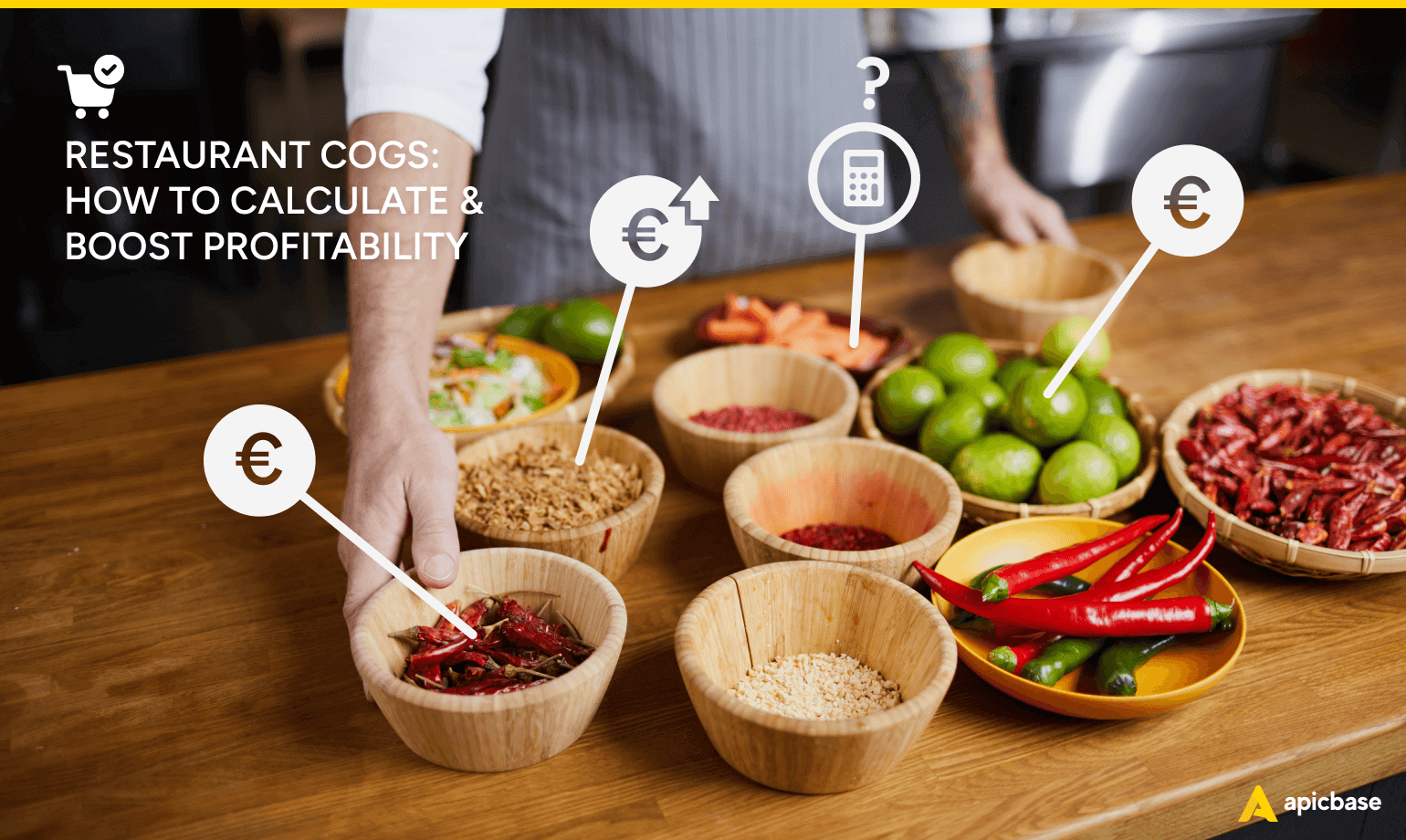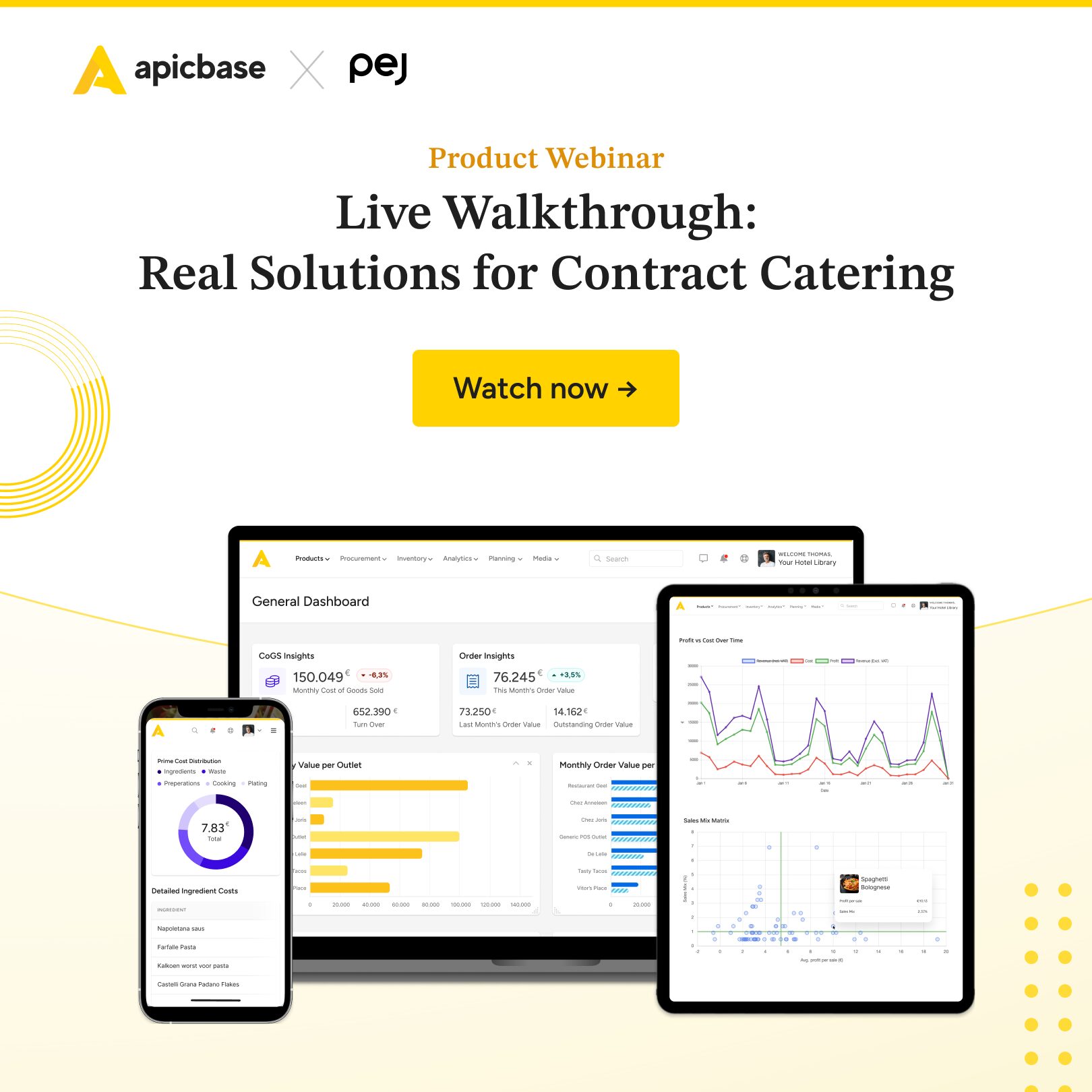Restaurateurs risk losing money on every sale when they don’t know their restaurant’s Cost of Goods Sold (COGS).
Effective cost management starts with understanding your COGS. This knowledge leads to better business decisions and higher profit margins. How? By controlling inventory and kitchen operations, you cut food waste and costs.
Read on to discover:
- The importance of understanding restaurant COGS;
- The restaurant COGS formula;
- How to lower COGS to improve profitability.
What Is Cost of Goods Sold (COGS)?

COGS, which stands for the cost of goods sold, is an accounting term for the direct cost of producing the goods that a business sells. For restaurants, it measures the cost associated with producing each item on the menu. This typically means the cost of ingredients and includes packaging costs for takeaway items.
COGS is one of the most important restaurant metrics to understand and keep track of, as it lets you calculate the profitability of menu items to ensure you are making money on each check.
The cost of goods sold is sometimes overlooked in favour of raw sales figures. But getting on top of restaurant COGS helps you identify areas to streamline operations, optimise kitchen prep, and make better purchasing decisions.
Understanding COGS is essential for effective food cost control, a cornerstone of successful restaurant management. You not only improve your restaurant inventory management but also ensure optimal stock levels for efficient operation.
With accurate COGS figures, you’re well-equipped for profit margin optimisation across your menu.
What’s the Average Restaurant COGS?
Your restaurant’s COGS percentage varies based on food style, service, location, and business model. Generally, aim to split the price of each menu item into thirds: gross profit, overheads, and COGS. This means your COGS should make up somewhere between 25%-35%.
For example, if you sell a burger for €15, it should cost €5 to produce, €5 goes to overheads, and €5 is your profit margin.
In reality, you’ll have more profitable and less profitable dishes on your menu. Some of your higher ticket items might have a lower COGS relative to the profit margin, while some of your most popular bestsellers may be on the menu to draw customers in rather than just for their profitability.
The type of restaurant you run also impacts your COGS and determines what a good COGS percentage would look like. QSRs that can purchase cheaper ingredients in bulk might be able to achieve a COGS percentage of 25%, for example. While a fine dining restaurant that uses artisan local ingredients might be happy with a COGS percentage closer to 35%.
Overall, you want to achieve a balance of dishes that are popular, cost-effective, and profitable to achieve a COGS that is realistic given the ingredients you use.
How Do You Calculate Restaurant COGS?
COGS is calculated over a specific period, telling you precisely what you spent to produce your food in that time. That gives you a raw figure that needs to be put into the context of what was sold over the period.
By adding the total sales figure for the period to the calculation, you get a useful COGS percentage that can be used as a marker of your success.
Let’s have a look at the formulas to make sense of the calculation.
The formula to calculate restaurant COGS is:
COGS = Opening Inventory of Ingredients + Purchases during the Period − Closing Inventory of Ingredients

This calculation allows you to see exactly what was spent to produce the food you sell. Let’s have a look at how you would use the formula to calculate monthly COGS.
Here’s an example calculation of restaurant costs of goods sold:
You take the value of your inventory at the start of a given period. Let’s say at the start of €1000. Then add on any purchases made during the month, which in this example is €4000. At the end of the month, you retake the value of inventory, which, in this case, is €1500.
1000 + 4000 = 5000
5000 – 1500 = 3500
Your COGS for December is €3500.
You can then turn the COGS into a percentage of total sales to make it more useful.
COGS Percentage = (COGS / Total Sales) x 100

Your total sales for December amount to €12,300. So your COGS percentage calculation goes like this:
3500 / 12300 = 0.28
0.28 x 100 = 28
The COGS percentage is 28%.
What Can COGS Show You?
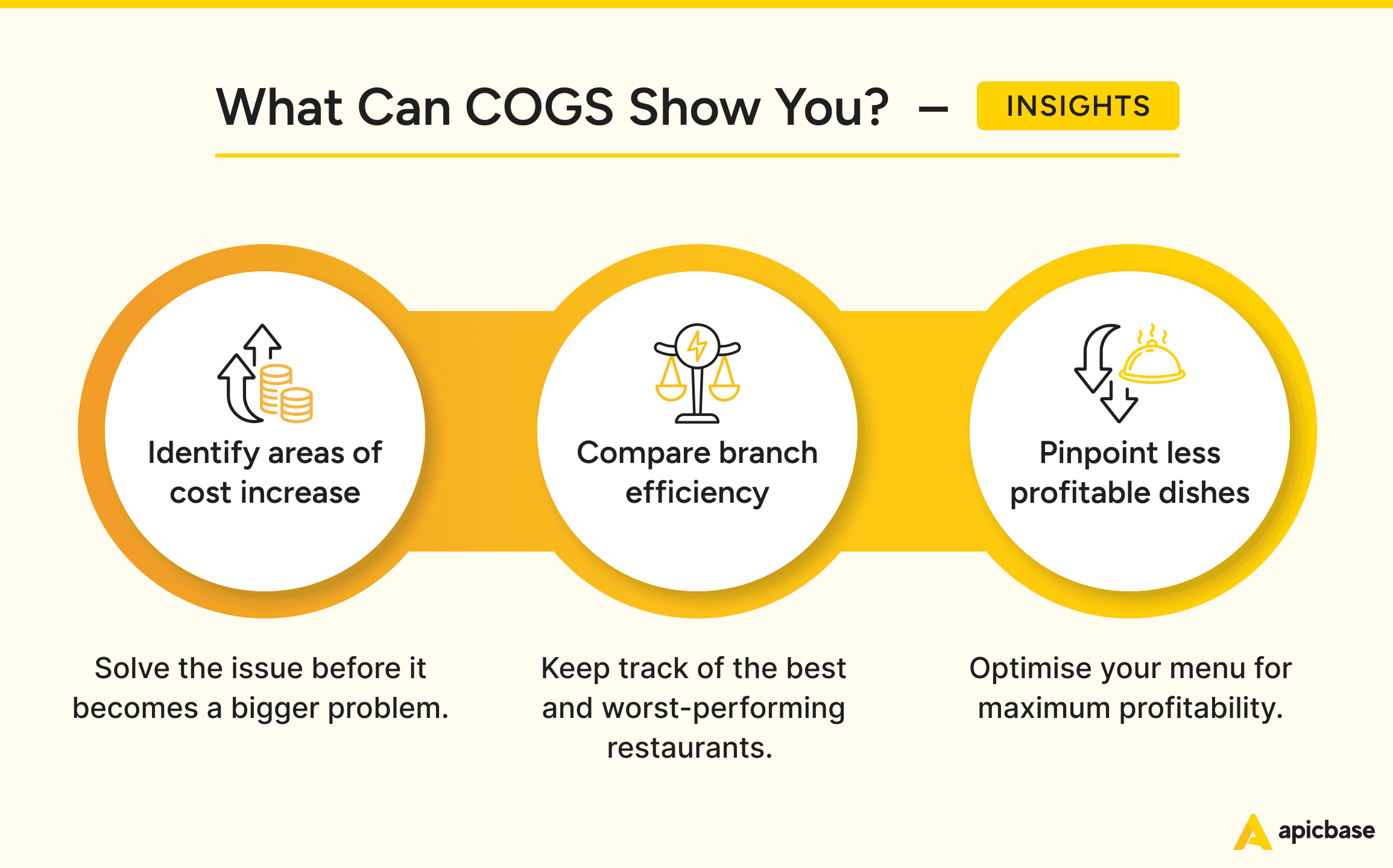
We’ve seen how COGS accounts for the cost of the ingredients and raw materials that go into creating the dishes served to customers. This calculation is crucial for restaurant owners and managers as it helps them understand the direct expenses associated with producing the food on offer, allowing for better cost control, pricing strategies, and overall financial management.
The end goal of this COGS exercise is to enhance menu profitability, a critical factor in your restaurant’s success.
Now, let’s have a closer look at what an accurate COGS calculation shows you.
1. Shrinkages and shortages: Identifies areas of cost increase
As a concrete measure of your food costs, COGS highlights areas of shortfall. If your COGS is higher one week, for example, you can look at what might be causing the increase.
A common issue that leads to higher costs is the shrinkage of ingredients during cooking and processing. Ingredients lose water as they’re heated, leading to shrinkage that needs to be accounted for. Plus, you can lose weight to vegetable trim and waste due to spoilage, especially if your kitchen is not managed carefully.
Items going missing through theft is another problem that causes a higher COGS. It’s not always simple theft, though. Careless portion control, staff meals, and ordering mistakes can all lead to food going unused and unaccounted for.
Staying on top of your COGS helps you spot any shortfall and solve the issue before it becomes a bigger problem.
2. Multi-location performance: Compares efficiency across different branches
Efficient kitchen operations begin with understanding COGS, enabling chefs to make cost-effective choices.
When you’re on top of your COGS numbers, you can use the data to compare performance across locations. Your COGS percentage is a good indicator of how well a kitchen is run, for the above reasons.
Once you identify your top-performing locations and see what they are doing to achieve a lower COGS percentage, take those learnings and apply them to your other locations to bring them up to standard.
Keeping on top of food costs and aiming for a better COGS percentage is a great way to motivate your leaders across locations and keep track of the best and worst-performing restaurants.
3. Underperforming menu items: Pinpoints dishes that are less profitable
A thorough menu cost analysis, starting with precise COGS calculation, is key to menu profitability.
Comparing COGS across individual menu items can help you identify your most and least profitable dishes. While you want a balance of bestsellers, higher ticket items, and popular but perhaps less profitable items that pull people in, it’s important to profit from each dish.
An accurate account of COGS for each item on the menu helps you see the bigger picture and optimise your menu for maximum profitability.
How Can You Lower Your COGS?
Reducing restaurant COGS is the best way to increase profit margins. Let’s explore a range of actionable measures and strategies to lower your COGS, enhance profitability, and fortify the financial health of your restaurant.
1. Improve menu planning by focusing on high-margin items
Begin with a meticulous review of your menu. Identify high-cost, low-margin items and consider re-engineering or re-pricing them. A menu engineering spreadsheet helps you streamline your offerings to focus on popular, profitable dishes.
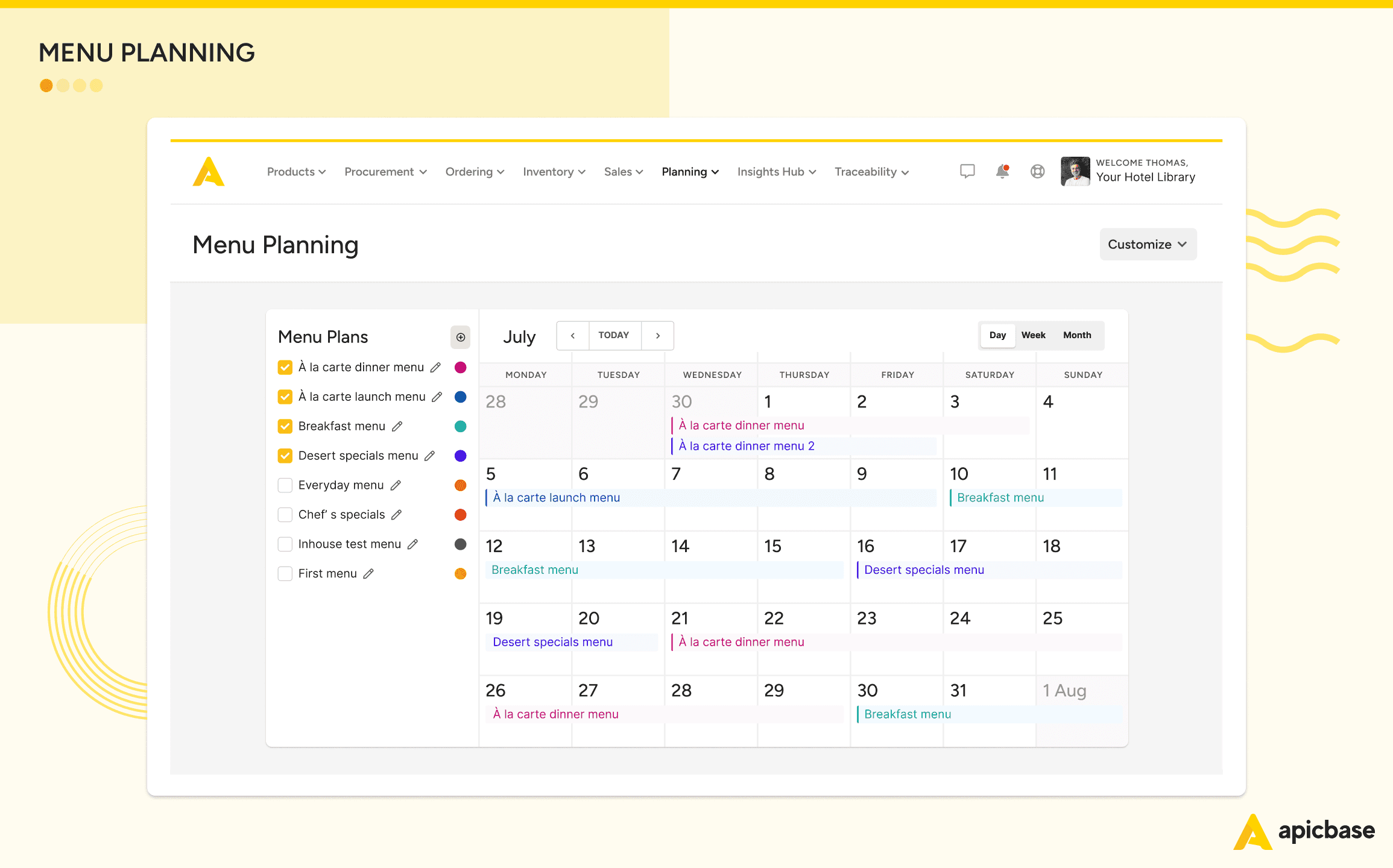
Think about dishes you could adapt to use more readily available local ingredients. Seasonal adjustments and rotating specials help manage ingredient costs and keep your menu fresh.
Menu planning is supported by detailed production plans and purchasing schedules that make sure your teams are producing food as efficiently as possible and minimising unnecessary waste.
2. Reduce food waste through efficient inventory management
A deep dive into COGS also aids in reducing restaurant waste, an often-overlooked factor in maximising profits.
How? Implement efficient portion control and train your staff to manage inventory with precision. Track and analyse customer preferences to align your purchasing with demand.
Modern restaurant management systems keep track of inventory and food waste to improve how you purchase, handle, and process ingredients to maximise value and minimise waste.
3. Automate inventory management with modern software solutions
The latest restaurant inventory management software allows you to automate much of your inventory management, from stock counts to maintaining PAR levels and even placing regular orders with your suppliers.
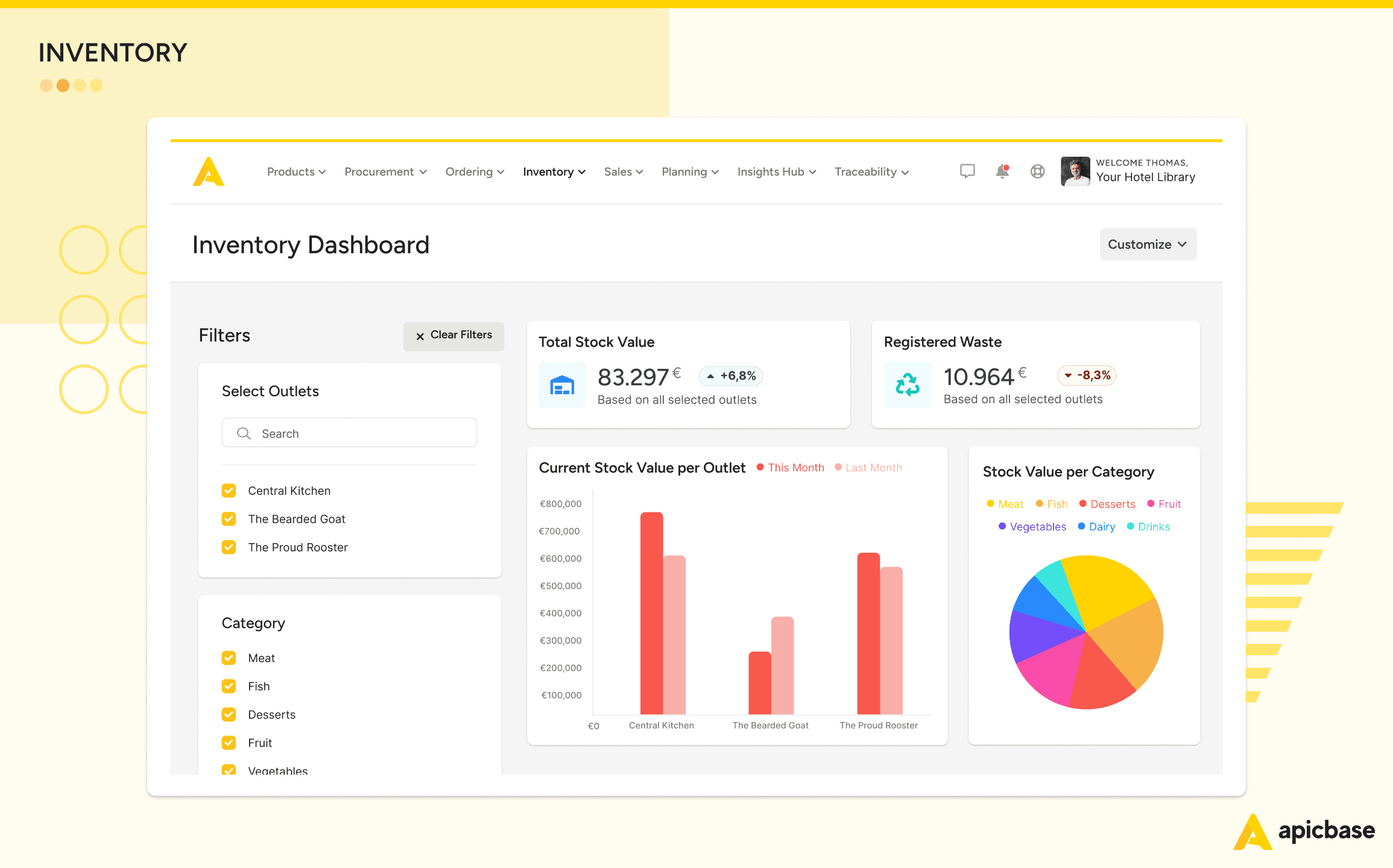
The right software saves time for staff, increasing efficiency and freeing them up to focus on higher-level tasks. Automated management software also helps reduce food costs through better purchasing decisions, reducing waste from overstocking and spoilage.
4. Streamline production processes to minimise waste
When you have proven processes in place, you can set up an efficient production operation at every location, increasing consistency, and improving brand reputation. Streamlined production processes and meticulous production planning also have a tangible impact on wastage and cost efficiency, and have the potential for a better yield from ingredients for a lower COGS.
5. Negotiate better terms with suppliers for cost savings
COGS gives you insights into your restaurant supply chain, helping you better manage purchasing, and negotiate better prices and lower costs.
Strategic supplier relationships have a significant impact on your bottom line. Building and maintaining strong relationships is a great way to lower costs and get you the best pick of ingredients.
Keep in touch with your suppliers and regularly negotiate pricing, especially when buying in bulk. With a solid line of communication, you can better explore opportunities for exclusive partnerships and loyalty programs.
6. Prioritise traceability
Getting better visibility into your supply chain gives you invaluable insights into where your ingredients come from. Not only is this a huge benefit from a food safety perspective, it can have a measurable impact on the quality and price of your ingredients.
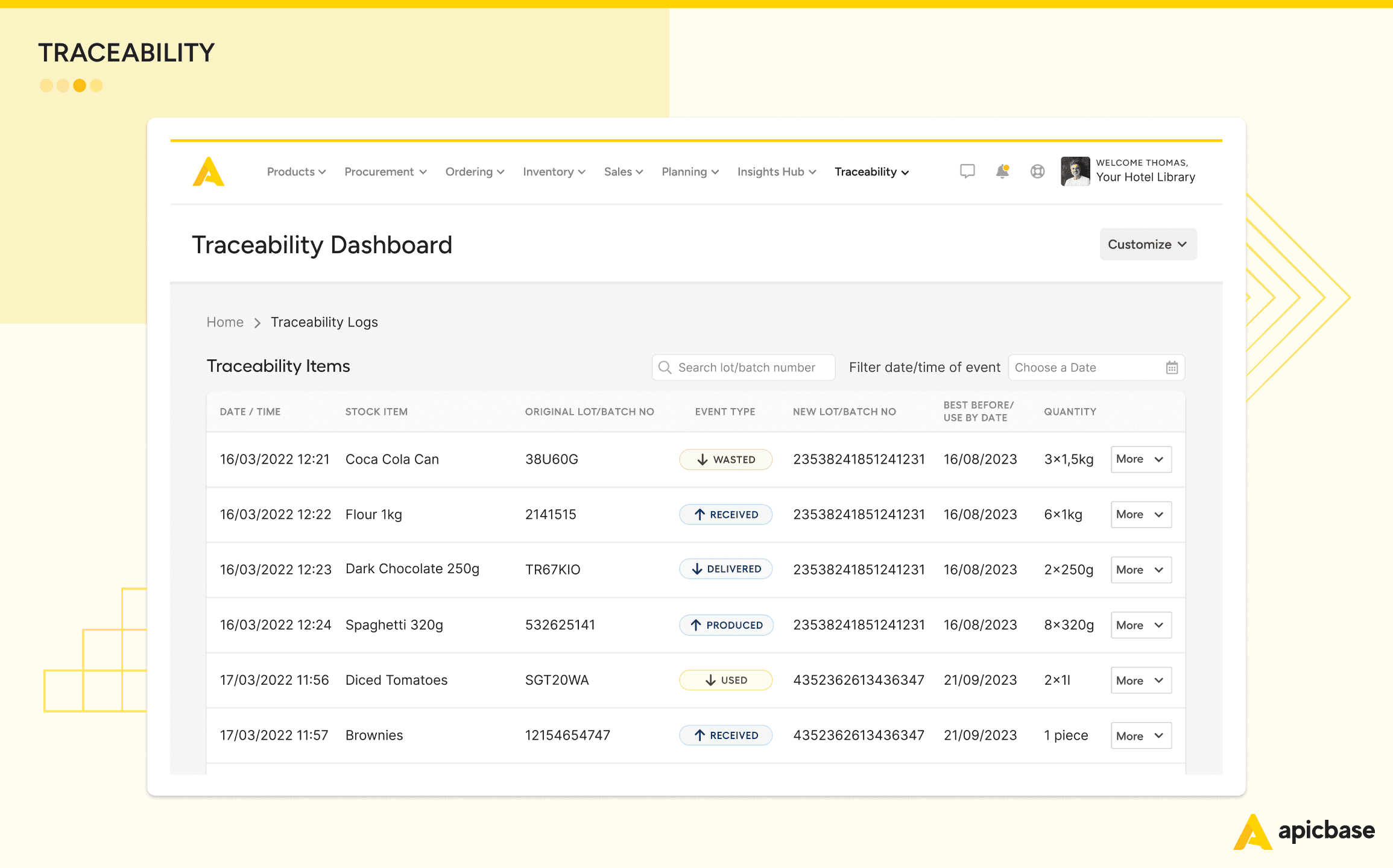
Food traceability software helps you track ingredients from source to supplier and avoid the risk of losing ingredients to recalls. Weigh the cost of using a system to track ingredients and improve traceability against the reduction this could provide to your food costs.
7. Make data-driven decisions
Leverage data analytics to make informed decisions about purchasing, pricing, and menu optimisation. Understand customer preferences, seasonal trends, and the performance of each menu item.
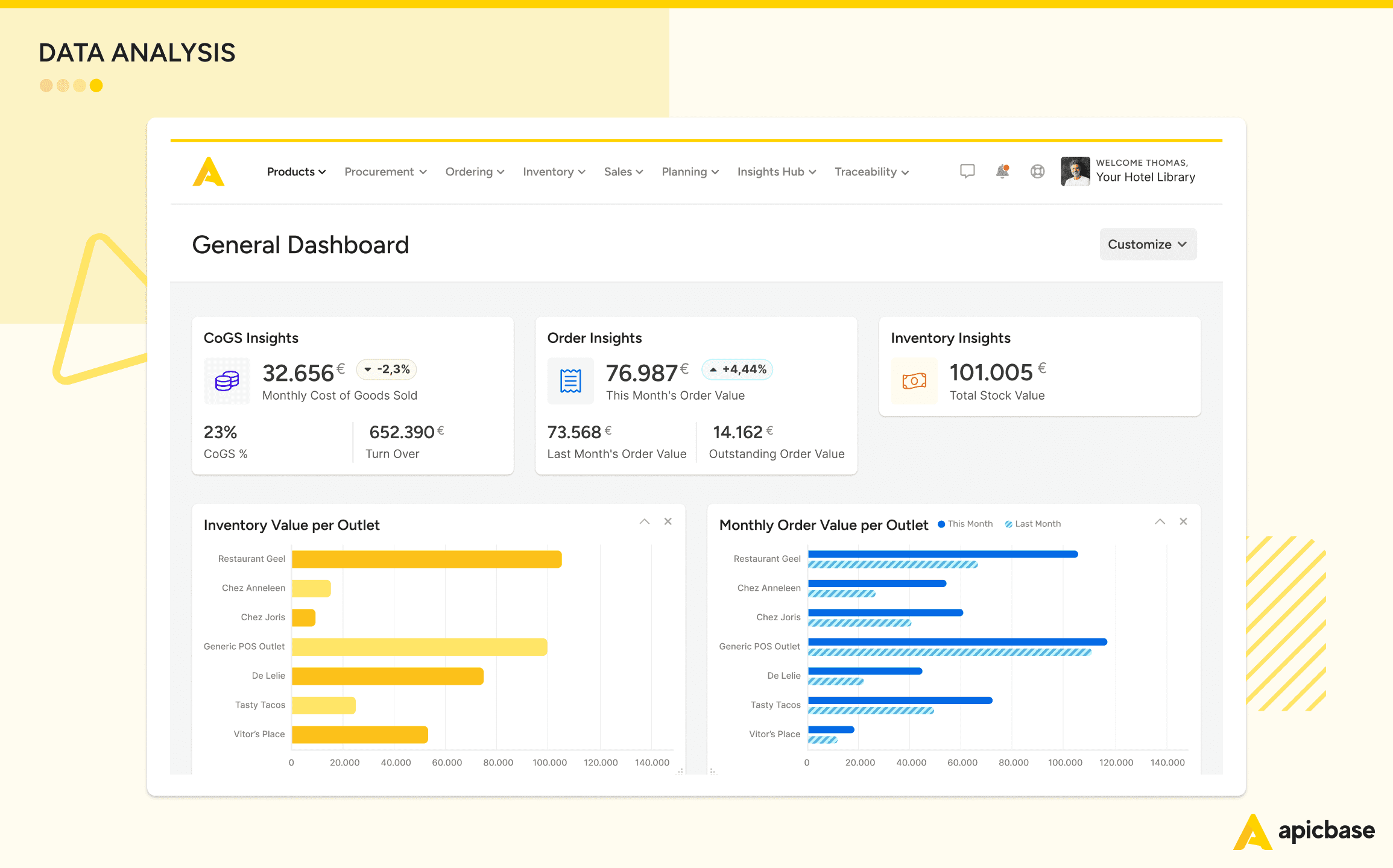
You can do the analysis manually. But, if you are working at scale or futureproofing your company, restaurant analytics software is a game-changer. It gives you the insights you need in real-time without pesky numbers-crunching. Accurate and to-the-minute data allows you to adapt quickly to market changes and make strategic decisions to lower your COGS.
8. Adopt restaurant management software
To truly get on top of all your metrics and automate key tasks, consider implementing restaurant management software that integrates various aspects of your operations.
From inventory tracking to sales analysis, these tools provide a holistic view of your business, allowing you to efficiently manage operations from a single platform. A comprehensive restaurant management solution with built-in inventory tools improves efficiency, reduces errors, and contributes to better COGS control.
9. Focus on continuous optimisation
Optimisation is an ongoing process. Regularly review and refine your strategies based on changing market conditions, customer preferences, and industry trends. Stay agile, and be willing to adapt your menu, sourcing practices, and operational processes for continuous improvement.
Control Your COGS With Apicbase
We’ve seen how COGS control is vital to achieving more efficient operations and making your menu more profitable.
But keeping track of inventory coming in and out and working out COGS manually is unrealistic during the day-to-day bustle of service.
Apicbase automates the process of calculating COGS and shows you everything you need in a clear and simple dashboard. You can see how COGS changes over time and make improvements to lower your COGS.
The complete restaurant inventory management platform helps multi-location restaurants and food businesses gain clarity over their key restaurant metrics and maintain control over profit margins.
Apicbase is the control centre for every aspect of daily operations in large-scale foodservice companies.

Ready to Optimise Your Operations? See Apicbase in Action!
Major restaurant groups, ghost kitchens, and international restaurant brands use Apicbase daily to manage inventory, control costs and wastage, and inform operational decisions.

